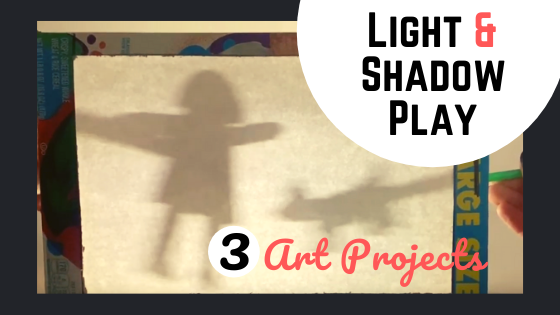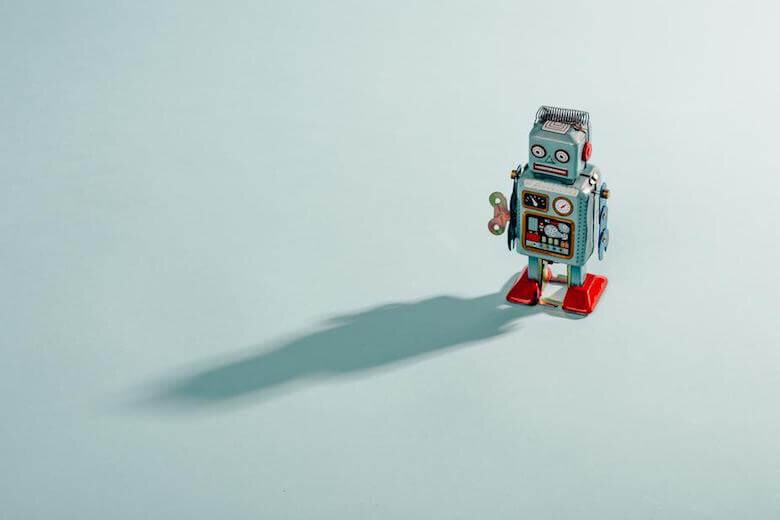Light and Shadow Play - 3 Art Projects for All Ages
Shadow puppet theater with girl and dog shadow puppets
The act of creating art has stress relieving benefits for all ages. If you’ve been looking for fun, creative activities to keep your kids busy, and you want an easy and relaxing art project for yourself, this blog post has that and more!
This post is a roundup of art projects for kids as young as preschool, tweens, teens and adults. I've included videos, photographs and links to learning extensions.
As I write this, it’s been almost 2 weeks since my family began practicing social distancing due to the coronavirus pandemic. In response, I’ve felt the need to stay busy, to keep my mind off of the scary things I can’t control. Every day, I have a checklist of things I do to keep myself physically and mentally healthy. In addition to working from home, I’m making time to take a walk outside, practice tai chi, and do something creative.
It’s so important, especially right now, to make time for relaxation every day. All the activities have the theme of light and shadows. The materials used for the projects might be things you already have at home, but just in case I’ve listed alternatives. The projects are organized by age starting with preschool.
Shadow Play With Kids
Preschool to 9 years old
How to Play Shadow Tag
Shadow play is natural for children. Channel their curiosity about shadows with these fun activities.
Last week, on one of my daily walks, I observed a mom and her daughter playing shadow tag. The girl was laughing as she stomped on her mother's shadow and yelled, "I got you!" It took me back to when my kids were little, when we played shadow tag. It's the same as regular tag, only instead of touching someone with your hand to tag them, you step on their shadow. Once your shadow has been tagged, you are "it". Now it's your turn to chase the other player's shadow!
Learning extension: Sundials
If it’s sunny outside, put an object on the ground and trace its shadow with chalk. Next, stand in one place while your child traces your shadow. Notice how the length and position of the shadow changes depending on the time of day.
A natural extension for this activity is learning about sundials. Here is a Video about sundials!
If the weather isn’t cooperating, you can duplicate the project indoors by using a flashlight or adjustable arm lamp. Place an object on a piece of paper and shine a light on it from different directions. Let kids discover what happens when they hold the light directly above the object, on the left side and on the right side or high and low. How does the shadow change? What shape does the shadow make?
Next, hold the light in a fixed position and trace the shadow that the object makes. It’s fun to look at the shape and imagine what else it could be. If you turn the page upside down you might imagine something else! Use the shadow’s shape that you traced, to make an image using pencil, crayons or markers.
Learning extension: Shadow Puppets
Read the book Shadows (Ages 4-8 )YouTube read-aloud of Shadows
How to Make a Shadow Puppet Theater
Best for ages 7 and up. Younger children might need help. This is an open-ended project for all ages.
A shadow puppet theater can be as simple or elaborate as your child’s imagination and skills will allow. It’s great for pretend play and storytelling.
I made the example from a cereal box, but you can use whatever box you have available. The front of the box is the “screen” and the back is where you place your flashlight or smartphone.
When you put an object between the screen and the light, it will cast a silhouette that you can see when viewing the front of the box or screen.
Please note: An adult needs to cut with a box cutter, X-Acto blade, or steak knife. It is possible for a child to cut the box with scissors, but it may be frustrating depending on your child’s age.
Supplies
Cereal box or a similar box
Marker or pen, pencil
Copy paper or tracing paper, wax paper, tissue paper
Box cutter, X-Acto blade or a steak knife will do in a pinch.
Flashlight or light from a cell phone
Thick paper or cereal box cardboard
Scissors
Coffee stirrers, popsicle sticks, straws or pencils
Tape and/or glue
Once you have the shadow theater assembled, your child can make the characters in their story. Preschoolers will enjoy holding small toys between the light and screen. Kids in kindergarten and up can cut objects or people from the thick paper or cereal boxes. Attach a coffee stirrer/popsicle stick/straw to the object or character with a piece of tape or glue and put it between the light and the screen to view the silhouette.
Learning extension: Stop Motion
Use an app like Stop Motion to make an animation of the shadow play or simply videotape the action as it happens.
Learning extension: Lottie Renninger
The master of silhouette animation is Lottie Renninger.Indonesian shadow puppets
Non-Objective Art Making For Relaxation
Tweens, teens & adults
Non-objective art is not meant to represent reality.The images are made of shapes, lines and color.
For the non-artist, this type of project removes the fear of doing it "wrong". The point is to relax, let go and enjoy the process of discovery.
In the video, I use a shell to cast shadows on a piece of white paper. I trace the shape of the object's shadow with a pencil.
Then I go over the lines with a black sharpie and paint the shapes that are made by the overlapping shadows. For some of the adults reading this, there is a voice in their head yelling, "I'm not an artist, I can't even draw a straight line!" I've taught adults and I've heard all the excuses before, so please trust me--you can do this! The goal is not to make a masterpiece to hang in your living room; rather, it’s to spend time exploring shadows and painting shapes in colors that are pleasing to you.
Instructions
Gather objects from around your house.
If you will be painting, choose the thickest paper you have, card stock or heavier works well.
Place objects one-by-one on the paper and shine a light on them to cast shadows. Go over the lines with a black sharpie - You can choose one or more of the objects to create the shadows for your pencil drawing. If you don't have a permanent marker to trace the pencil lines, you can use a crayon or ballpoint pen.
Paint the shapes that are made by the overlapping shadows
Not everyone has paint in their house, so here's an easy solution you can find in your kitchen: make paint with food dye and water! The food dye paint will be similar to liquid watercolors. For each color, measure 2 tablespoons of water into a small container. Depending on how saturated you want the color, add 2 to 4 drops of food coloring to the water.
Play some relaxing music to paint along with and you'll feel the worries of the day slip away.
Learning extension: Kandinsky
Two artists who painted non-objective or abstract paintings.Wassily KandinskyRobert Delaunay
Join our email newsletter community:
Click here to find out where we’re popping up next, get helpful art-making tips and free mini video tutorials!
Pop up Art School – your one stop for art lessons
Ditch the car keys, choose a lesson, fire up your device, and create with Pop up Art School – from the comfort of home!
Even if you can't draw a straight line, our step-by-step art tutorials help you relax and feel confident.
Our Art-to-go library has prerecorded art projects for kids, teens and adults in a safe ad-free environment. We now offer kits with free shipping in the USA.




